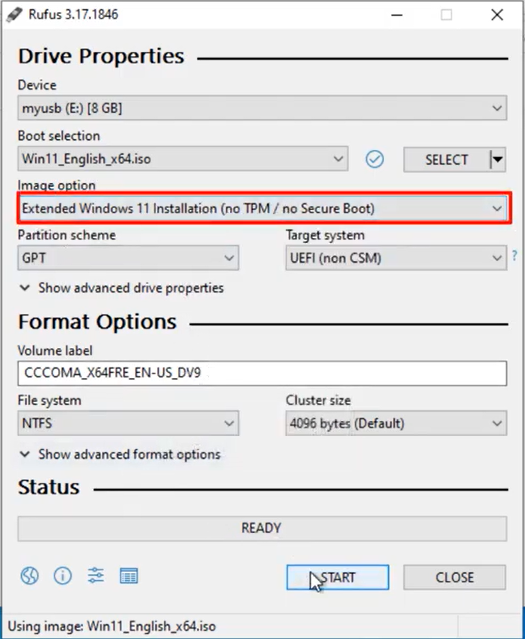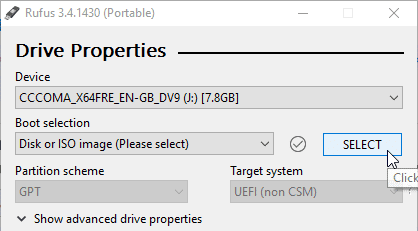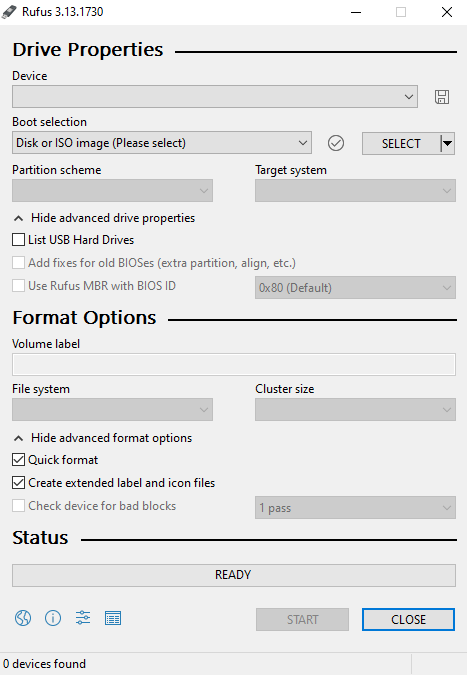


#Rufus iso vs how to#
But if you have installed Windows 11 on your computer, how to get a bootable USB drive? Move to the next part.
#Rufus iso vs windows 10#
Select NTFS if the program errors as above.Tip: If you are using a Windows 10 PC, you can refer to this related article - How to Create Bootable USB from ISO Windows 10 for Clean Install.

Selecting MBR and FAT32 will support both UEFI and Legacy. In general, choose GPT if you only need UEFI support. This ISO image contains a file larger than 4GB, which is more than the maximum size allowed for a FAT or FAT32 file system. If you get this error message, it means that the ISO file contains a file larger than 4GB. In this case, choose NTFS instead of FAT32, Rufus will create a second FAT32 partition to support UEFI boot.
#Rufus iso vs install#
Or select Standard Windows Installation to create the installer to install to any other drive. Image Option: You can install Windows onto USB drive with Rufus’s Windows To Go option.

#Rufus iso vs drivers#
Supports USB 3.0 driver for Windows 7 and SATA/RAID/SCSI drivers for Windows XP.Also supports hard drive, external hard drive and SDcard.In addition, AIO Boot also supports creating Windows 10 bootable USB and a lot of other operating systems that you can use: You need to use older versions or other tools in this case. Rufus 3.0 is no longer supported on Windows XP. This tool does not support creating multiboot usb with multiple ISO files, and can not have multiple operating systems on USB unless the ISO file supports it. Rufus requires reformatting the USB drive for each use. This tool does not support hard drive (HDD) and external hard drive. If you want to create a bootable hard drive or an external hard drive, Rufus is not the choice. Only supports USB (not tested with SDcards).Rufus offers many great features but it also has limitations. Rufus is a simple and easy to use tool, just download and run the tool to create bootable USB. You can easily use Rufus to create Windows 10 bootable USB and many other operating systems including Windows XP, Windows 7, 8, 8.1, Ubuntu and many other Linux distributions. This tool has a long history of development (from 2011), Rufus 3.4 is currently the latest version updated in 2018. Personally I like this tool because it’s lightweight, simple and easy to use. This article will guide you how to use Rufus to install Windows 10 that supports both UEFI and Legacy. Rufus is one of the best USB bootable software.


 0 kommentar(er)
0 kommentar(er)
